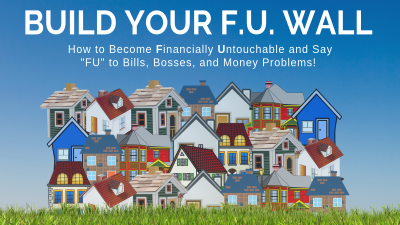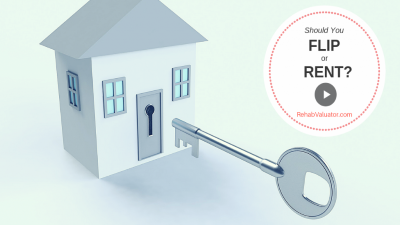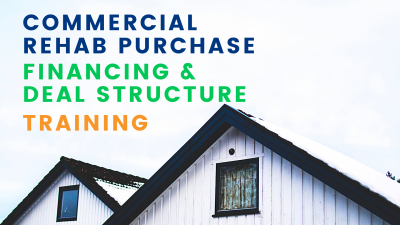Commercial Rehab Purchase, Financing, and Deal Structure Training!
This is a detailed Training and Case Study on a Commercial Rehab Deal. We go through commercial deal valuation, deal structure, commercial rehab financing, various Rehab Incentives that you might be overlooking, and how they turned this deal from a total lemon into a home run! Watch, take lots of notes and share with your friends!
Here’s just some of what you’ll learn about investing in commercial property:
- How I bought a commercial property with seller financing at only 4% interest and got 97% of my purchase price funded!
- How to determine value (especially ARV) of commercial properties
- What “cap rates” are and how they’re calculated
- How to find hidden deal incentives that can be a game-changer for your deals (you may be leaving a lot of money on the table!)
- How to make home-runs out of real estate deals that other people pass on
- How to use seller financing + bank financing for short term and long term deals
- What “market cap rates” are and how to use them for valuation and to get financing
- And much much more
Next Videos

How to Build Your F.U. Wall

Get Rich Slow



Hi Daniil, I love Rehab Valuator Premium. I have commercial property in view that is up for auction. Can the same methods be applied to find feasibility and value to win bid and not over pay for the project?
Yes! Check out our page on Commercial Real Estate to see some more details and reach out to our support team with any additional questions ?
Historic tax credits are only available for certain qualifying rehabs. Not new construction. Single fam or commercial.
Great presentation.
Are these credits applicable for Commerical New builds only ?
Or do they apply on SFR rehabs as well ?
Hi Sherita! The Rehab Valuator Premium software will assist you with finding comps. If you have any questions or issues, please reach out to us at [email protected] and we’ll be happy to assist you further.
Actively seeking a commercial broker or agent for comps. Thanks for all you do.
Appreciate your feedback, Alan!
Glad you’re getting value out of this, Marcia! Definitely worth watching multiple times.
Glad you’re getting value out of this, Marcia! Definitely worth watching multiple times.
Actually this video, if you pay attention, is about a rehab, not new construction, and is about a building with commercial downstairs and 4 apartments upstairs. You’re confusing this with the new construction project that is going in next door. Also, the rents for commercial spaces I am using have been well researched and thought out. But I do appreciate your input! (kind of)
Hi Morace,
It’s probably not ideal for this scenario. We’re working on adding in long-term rental options which will hopefully be released by the end of this year. The biggest limitations inside Rehab Valuator in regards to long-term rentals are: Rehab Valuator upfront financing is interest only, all cash, or profit split and 24 months or less (or a combination). The reports the program creates revolve around this financing period. In addition, the program doesn’t show income during that 24 months (or less) period.
Todd – yes, you can sell tax credits. State are easier to sell than federal, as federal tax credits require the owner to hold the property for 5 years. So there’s more risk to the tax credit buyer when buying federal. Selling state credits are far more common
Correct. This case study specifically talks about the smaller, existing commercial building. Not the big project
Thanks, Pat! That means a lot!
Sounds like you’re following right along with the stuff we teach, Jessica. That’s awesome!
How we’re finding commercial tenants: personally, for this project and a bigger mixed use project we’re working on, it’s through existing relationships, contacts and word of mouth. You can always hire a commercial leasing broker to advertise your space and seek clients for you. Find someone who specializes in the type of tenants you look for: office, restaurants, retail.
And get the word out through your entire network: “Hey, if you know anyone looking for a great commercial space, have them reach out to me! etc etc”
$ per sq foot is a great way to go. Glad you’re enjoying the case studies, Duke!
It’s not really a software for a full portfolio analysis. Better to use it on a per property basis
Awesome, Anand! Congrats on your duplex. Arlington is a great area. If you can build at the right cost basis, I am sure you’ll have an awesome rental property on your hands!
Hi Lucius,
Rehab Valuator is a software program. It’s used to analyze and market fix and flips OR fix and holds to cash buyers (wholesaling) or to lenders if you’re looking for funding. All of training, like on this page, is free. We don’t charge for it.
Frank – you can definitely do that if the seller is ok with it and if the construction lender (bank) is ok with it. Often banks won’t like having notes in 2nd position if they’re in 1st
I would join your training where is the sign sheet ?
What if the seller would subordinate to the construction loan with a payoff due upon refinance?
Hi Michael. I’ll be posting more content about the ground up part of the project later. In the meantime, this video should help. It shows how to use Rehab Valuator for vacant land deals: https://rehabvaluator.com/tutorials-web/knowledgebase/new-construction/
Daniil, presentation was very – I’m looking at similar deals now and happy to be a premium user as the reports and presentations are great. I was hoping to hear more about the other side of the project – the vacant lot deal and how valuator could be used for that part of the project. Thanks for sharing, Michael
Thank you ,for this case presentation. i can use this as my model in my next project. YOU’RE so smart .Well done.
Hey Daniil, Thanks for the quick reply about my dream of bringing the abandoned school back to life. I’m going to explore this idea some more. I think it would be good for our town in general, too. But of course, I want it to be a money-making project for me too!
I think it would likely need to be a gut job, but I want to keep as many cool characteristics as possible. Every apartment would need a kitchen, bathroom, etc. It probably has asbestos in it.
I need to get more experience in a smaller rehab first, I think. In the meantime, I doubt the school will be going anywhere, so when the time is right, I will make my move.
Thanks again for taking the time to create this video, Daniil. It opened my eyes to some bigger possibilities for sure!
Tracy – I did a similar project a few years ago to turn an old school building into a restaurant and 4 apartments. Actually it was a building that used to house a school and a cafeteria downstairs. Similar size project as one in this video. It’s not that hard. Just build a good team!
Hey Daniil,
Thanks for this. Hearing what you’ve done makes me think of something I’d love to be able to put together someday, but I’m not as far along in my business as you are. I don’t yet have the confidence or knowledge for it now.
I’d like to buy the abandoned school in my hometown, and turn it into living rental loft space above, and storefront on the ground floor. I can’t even begin to think what all would be involved here in the rehab, but what you present about the financing and the tax abatement and tax credits could make it doable, somehow. I’m going to do some research on that…
This school is in a small town, which is relatively depressed economically. However, I think there could be a market for this sort of rental from local college professors and medical professionals in a neighboring town.
I’d be interested to hear whether you, or any of your viewers here, have done or explored rehabbing a school for another use. Or, maybe it doesn’t even matter that it was a school? The numbers are the numbers, etc.
Thanks again for taking the time to break this down for us!
Good morning DANIil just sat in on your rehadvaluattor class ,it hit home , it hit all my question I had for you , but I am having a great deal of a problem most of the buildings that I have look at they have a number on the building to call , but no one seems to call me back ,or if they want to sale or lease so am stuck on what I must do next to get in contact with the owner, plus my capital is not that large ,I have great ideas that I would like to put fourth on these buildings can you give me more in site on how to get incontact with the owners to answer the phone , let me tell you I’ve been to the town office , I have done my home work still no answer.
You’re welcome, Mary! Good points!
Glad you liked it, Mark!
Great presentation. I am getting into the CRE market place and this will be great to present to my private bankers.
that’s a fantastic incentive to do commercial projects. from what I understand each city/state offers various types of credits for developing commercial projects. this is my goal indeed as I am in it for the long haul. residual income properties are a must for longevity investing in real estate.
fyi to fellow investors: just type in the city that you’re working on projects in followed by commercial property tax credits in the google search bar and a few government websites will be revealed. i.e. ‘baltimore commercial property tax credits’
as usual good stuff, Daniil. thanks a bunch.
We actually are tying the new building directly to this one. So the whole block is getting redone lot line to lot line!
Glad to hear it, Kyle! 🙂
Joseph – all the information about Rehab Valuator can be found here:
https://rehabvaluator.com/about
https://rehabvaluator.com/pricing
https://rehabvaluator.com/upgrade
Highly recommend upgrading to Rehab Valuator Premium and taking the annual deal. Well worth it!
Kinda what I am doing here 🙂 Can’t teach you everything in one video!
when you gonna step up to the plate and show ME how to get, make, and run deals like this ?
Daniel it was a very good presentation amazing information
I want to start doing real estate like commercial buildings and also
Homes and apartments. Tell me more about this software and other stuff you have
I like to know also what’s the price to get all the materials and software
I need to start.
Thank you so much Daniel
I am interested in working with commercial building and would be so grateful
if you would mentor me along the way. Many thanks. Terry
Great presentation! You really got my creative juices going when putting together deals.
You did not tie in your new project on the rest of the block. Why not?
I need to learn this system.
Dan – I try not to give any formal advice about entity structure or other legal matters. Always best to consult with a good asset protection attorneys. I have everything either in single member LLCs or some of my LLCs have up to 8-10 properties each. I have one commercial insurance policy covering them all, then another umbrella liability policy on top of that.
Great information because I am try to buy some condo’s and I was all lost.
Hi James,
Yes you can still access those. You can email us at [email protected] for more info.
As always… Very nice and thank you! We need more people like you out there. Like the subtle reference to legal in the holding/umbrella company. Did you ever put together a video or docs on entity creations and structures for commercial? The what and why surrounding “off book” costs and such. Again, thanx a ton for what you are doing… Have a great day!
I am a long time user of your premium products. When you offer bonus for new user, do the older members have access to those bonuses?
Tony – spending money on an appraisal every time is pretty crazy and expensive. All you need to do is find a reliable source of comps and figure out the ARV yourself. That source can be MLS, Zillow (they have good comps data in disclosure dates, though Zestimates are garbage). Check out this blog post: https://rehabvaluator.com/wholesaling/how-to-calculate-arv-and-find-comps/
Nice job, Phillip! Make sure you’re taking maintenance into account to calculate your cashflow. If that $205/month is before maintenance and cap-x, it could get eaten away pretty quickly
That’s a good idea. I’ve done a ton of single family guts so I definitely should be able to do a video on that
Glad to hear it, David! Thank you
Thanks, Vicky!
GREAT educational information. This software is awesome. Thanks Daniil.
thanks for putting this video together. extremely eye opening. stumbled upon this site (again) and going through the information links.
Daniil–
I really enjoyed this video and hopefully learned something. I just today purchased a 1927 house 100% cash with a private investors money. Paid $47,000 and ARV will be $80,000. The investor will get 4 or 5 times the 1.2 % or so interest rate he was getting at Ally Bank The house will be rented @ $840/mo for 2 years$205/mo cash flow- then refinanced @ 80% ARV taking $6540 cash out while continuing $205/mo cash flow. Have a long term renter. Then rent will be $900/mo. This motivated seller was found on the MLS. Low ball offer to a frustrated seller 171 days on MLS. Now I need to look into some of your TAX BREAK IDEAS. 2nd deal so far this month.
Phillip
Great easy to understand presentation and process. I am new premium member. ARV calc for commercial property is relatively straightforward & mechanical. For residential property, we spend $ to buy a detailed appraisal from a professional valuation person in the area (effectively buying a bank style appraisal upfront, to ensure proposed investment on the particular house makes economic sense.know any better ways to assess residential ARV?
Great can you do a video on single FAMILY Total rehab down to the studs
Oh I had my husband get the upgrade Laval Brewer
Thank you
Bank or private vs. seller – doesn’t matter as far as model is concerned. For the purposes of this modeling, I was assuming we’d pay the seller note anyway with cash so $345k purchase price as far as my bank is concerned for the construction loan is all cash (after we pay seller note off).
My man Ken! You’re well on your way buddy. Glad you learned a few things here!
That’s what this video is for….. 🙂
You’re welcome, Joe! Always good to hear from you!
Daniil,
This video is right down my alley. Thank you very much as I always enjoy your video lessons.
I would like to know more about Commercial Rehab Purchase, Financing and Deal Structure Training!
Great video Daniil! Learned a few things that I didn’t know especially about more about how the construction loan process works and the additional credits you can get and how/where to search for them.
Daniil,
This video made my brain hurt, dude…thanks! I’m using rehabvaluator here, not rentalvaluator for this, my first deal for a rehab & rent. A few questions & comments:
My deal is not seller financed. I’m looking at either bank or private lender. Still valid?
Reference determining/increasing line 32, ARV, which reduces line 62, Cap Rate, it appears to be theory, not realistic? Lender sees through the process?
I modeled the video and accept the figures produced up to 00:25:00-0027:30, where you analyze the mini-perm?
– in order for the refi loan amount to match the rehab loan amount (in my case, not your construction), I could not simply use the 75% cost to be financed, line 9, as you described in the audio. I used the division you first described and divided line 38 by 32, which resulted in a 53% line 46, and a close match on line 38. Good?
Line 59: 2.06
Line 60: 6.62
Line 62: 7.03%
Any info needed for you to keep me on track, while I research tax incentives?
Thanks,
Hard L
Can you sell tax credits for lump sum on secondary market?
Why don t you show the tax credits as additional income each year? Wether you sell tax credits in secondary market or keep yourselves the result is the same additional income,cash flow as a result of tax reduction dollar for dollar.
Comps is for residential situations only. Value for commercial / mixed use is totally dependent on income & cap rate.
Hello Daniil. This video wanted to be confusing because I thought it was supposed to be about NEW construction. NEW construction do not use ARV… instead you would use EMV — estimate of market value. ARV is only for residential stuff, and where you are doing renovations,not new construction.
At one point you mentioned that upstairs was 30 apartments, yet you only used 4 apartments. Wouldn’t it less confusing to simply use the actual number of apartments? Also, in your presentation, you have a commercial unit renting for a huge amount when “common sense” tells you this makes no sense! It makes no sense doing this when in real life you know that should this tenant move out, you are at a substantial loss, and cannot make debt servicing from income. Last, but not least, you talk about a building that you can get a million dollars of financing, when you only have HALF million dollars of income! Which Lender would do something like this? This is called financial suicide or a FORECLOSURE waiting to happen! Please clarify……….
Indeed! Ton of other great info here:
https://rehabvaluator.com/tutorials-web
https://rehabvaluator.com/resources-learn
I thoroughly appreciated this great information. I will like to watch it one more time and let it sink in better.
Thank you for being so generous with your help and time. You are indeed a remarkable individual., one of a kind!!!
I am working on a 150 unit 55+ Senior housing project in Dallas Texas. This project does not need rehab, but need tax credits to handle the financing which has a sale price of 3.5 million, do you think rehab valuator can handle the job.
Morace
Quite the comprehensive lesson and presentation of a sophisticated project. I really appreciate the insight you bring. For people who have not done nor participated in these types projects (that would be me) there are so many moving parts that it’s not generally understandable, but your explanation was very clear as to how you worked your way through this project and the feasibilities, and the potential hazards. I’m nowhere near this level of sophistication in terms of any deals I am involved with, but there is considerable value in thinking on this higher level you bring. I am sure I will watch this a few more times. Thanks again! Top notch material.
Hi Thomas,
Sometimes ARV is a little difficult to calculate for commercial properties. Please see this case study that might be helpful: https://rehabvaluator.com/commercial-rehab-purchase-financing/ Please reach out if you have any other questions.
Thanks!
I’m not understanding how to choose an ARV! In this case, the property is a vacant 22unit apt bldg. the melt rents are $750/month 1 br and $850/ month 2br apts. Expenses, are based on a 33 percent estimate. I calculated the NOI times 10 to arrive at the ARV which seems high for the area.
Hi – the commercial deals I do do NOT have bedrooms and bathrooms. Is there an option to remove those details from the reports we present to our investors? Thank you very much. Ryan
I don’t understand. Looks like this deal applies to the small hard-to-get building. What about the overall project?
Again you did a very good job in educating us Thanks
Okey if I accept 4%and really want to buy building with seller financing would you do business waiting reply I no need to be your video few video are in my mind too difference is you have system and I will put myself
This is one the most clearly presented commercial presentations of a large project I have ever seen.
Very impressive Daniil 1
Your information just gets better then anything out there and you offer more with each presentation.
Pat
Thanks for the video. We have moved out of the house rehab into the commercial space and this will help a bunch. Some of ours are industrial buildings that we demise down into smaller spaces and in many cases the tenant decides the size and configuration but I can allocate a $ per square foot and get it pretty close for bank financing.
Very helpful.
i have learn quite a bit from your case studies buy and hold investor and know because of your education committed to building duplex in arlington tx
I am analyzing a deal in N C. Combination of mobile home park, 3 residential home and 2 apartment building. The owner is will to hold financing with 20% down. How will I used your premium software to model this. Thank you.
This is a great video Daniil!
I really love the way you put this information together. I also love that you share it all so openly. I have VERY much enjoyed watching / learning in your community. This will be my next adventure (a mixed use building). It is funny but I seem to be following along in adventures that you are broadcasting information on. My latest was an AirBNB specific unit in a town with a 35% gap in hotel nights. Some people around me think I am crazy. Many people around me think my love of mixed use as my next project is crazy too! You don’t with the right planning and the right tools, and I love that support. Thank you.
I would like to know how you do in finding commercial tenants for this project. In my experience that is the one area of weakness in these deals and that area looks a little sketchy.
All my best –
Jessica